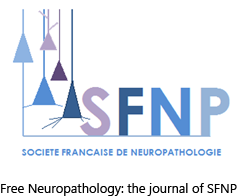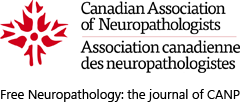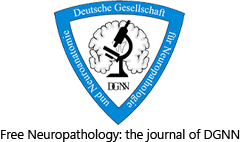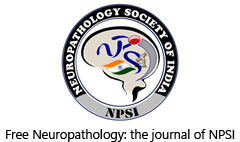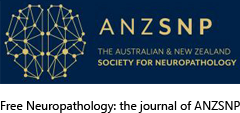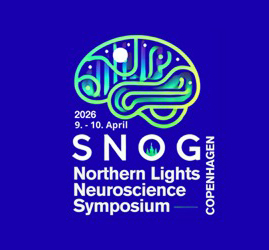Publication Ethics and Malpractice Statement
1. Editorial structure and ownership of the journal
The General Assembly is composed of (a) the Editor, (b) the Editorial Boards and (c) the Ombudsperson. The General Assembly is the owner of the journal title. Neither the General Assembly, nor any individual member of it, can transfer (their share of) ownership of the journal to a third party. Ownership of the journal title represents no monetary value.
(a) The Editor is responsible for making strategic decisions after consulting with the Editorial Boards and regularly reports to the Editorial Boards and the Ombudsperson. The Editor appoints members of the Editorial Boards, runs the Editorial Office and organizes the editorial/publishing process. The Editor makes final decisions on acceptance or rejection of submitted manuscripts and on technical issues such as copyediting, layout, website and promotion.
The Editor is elected and appointed for a term of five years by the members of the Editorial Boards. The ballot is managed by the Ombudsperson. The Editor can resign at any time provided the resignation is announced three months in advance. The Editor can be discharged by the Editorial Boards which requires a two-third majority of votes.
(b) The two Editorial Boards are the Board of Associate Editors and the Board of Copyediting/Layout Editors.
Members of the Boards are appointed by the Editor for an initial term of three years with the option of extension. Selection for Associate Editor specifically takes into account the candidate's excellent standing with respect to commitment and previous editorial service. The Editor will strive to balance the Editorial Boards with respect to scientific areas, geography and gender.
The full names and affiliations of every Board member, as well as detailed contact information for the editorial office are provided and kept up-to-date on the website of the journal.
Editorial Board members can resign at any time. In case of insufficient cooperation Editorial Board members can be uninvited by the Editor after consulting with the Ombudsperson at any time.
(c) The Ombudsperson is responsible for mediating between authors and the Editor as well as between Editorial Board members and the Editor in case of any disagreement that cannot be resolved otherwise.
The Ombudsperson is appointed by the Editor after consulting with the Editorial Board for a term of five years. The Ombudsperson can resign at any time provided the resignation is announced three months in advance.
2. Authors and their responsibilities
Free Neuropathology does not require any fees or charges for manuscript processing and/or publishing. As part of the submission process all authors agree with and adhere to all journal policies.
3. Peer review process
Everything published in Free Neuropathology has to go through peer review, i.e. thorough and objective examination by experts in the field the manuscript is concerned with.
Papers are undergoing prompt initial review by the Editor. The Editor will decide whether a paper is suitable for peer review and will make the final decision. Referees will usually be invited by the Editor within 24 hours and they are given 14 days for their reviews. Peer review is performed by members of the Editorial Board and/or by external referees. Authors may suggest or exclude referees, but there is no need to do so. Single-blind peer reviewing is employed, which means that reviewers are aware of the identity of the authors, while the referees’ reports provided to authors are anonymous.
Reviewers agree to the following:
- There is no conflict of interest with the parties involved in the publication process.
- Reviewed articles should be treated confidentially during peer review.
4. Publication ethics
The Editors and reviewers will take all necessary steps to identify and prevent the publication of papers where research misconduct might have occurred. Research misconduct shall not be tolerated by any member of the Editorial Board or person involved in the publication process.
Generally, in case of appeals, complaints or allegations of research misconduct, authors and reviewers should contact the Editor.
Areas of research misconduct include (but are not limited to):
(a) ethical problems,
(b) plagiarism,
(c) ghost, guest, or gift authorship,
(d) fabricated data or image manipulation,
(e) undisclosed conflicts of interest,
(f) addition and removal of authors,
(g) appropriation of ideas or data by a reviewer,
(h) systematic manipulation of the publication process,
(i) editorial conflicts of interest.
The Editor is committed to clarifying any such allegation of research misconduct following the guidelines of the Committee on Publication Ethics (COPE). Regarding the different areas of misconduct delineated here, the Editor is committed to publish a correction, clarification or retraction for articles already published. Authors are obliged to provide corrections of mistakes where necessary. Specifically, these issues will be prevented and dealt with as follows:
(a) Ethical problems
Authors should generally include information regarding informed consent if the research described in a manuscript involved human participants. If a reviewer or Editor raises ethical concern about the content of a submission (e.g. lack of ethical approval, concern about patient consent), the author should be asked for more information. For all manuscripts that include details, images, or videos relating to an individual person, written informed consent for the publication of these details must be obtained from that person (or from a parent or legal guardian in the case of children under 18). The consent must be for publication of their details under the Creative Commons Attribution License 4.0 (such that they will be freely available on the internet). If the person has died, consent for publication must be obtained from their next of kin. The manuscript must include a statement that written informed consent for publication has been obtained. For reporting experiments involving animals, the Materials and Methods section should state the laws and regulations on the care and use of laboratory animals that were followed (including the name of the ethics committee and the reference number where appropriate).
(b) Plagiarism
After submission an automatic database check for potential plagiarism is conducted by the editorial office. Since the mere percentage of overlapping text is often misleading, the results of this analysis will be thoroughly evaluated by the Editor, who will also take into account the nature of the other publication and which elements of the text caused the overlap. For example, similarities among the references, description of methods, detected similarities with previous uploads by the author to an archive, or a similar thesis formulated by one of the authors are usually to be considered unproblematic.
If a reviewer still identifies potential plagiarism, the Editor is to be informed about the exact portion of the submitted text that is to be investigated further. If the Editor identifies an instance of clear plagiarism (e.g., a paragraph of text presented as written by the author), the author shall be requested to sign an authorship statement. Minor instances of duplicate phrases should be corrected by the author (e.g. by rephrasing them).
(c) Ghost, guest, or gift authorship
Peer review shall be suspended if the authorship as stated in the manuscript is doubted by a reviewer. In this case, the Editor will explain to the author that every person involved in the research underlying the manuscript and preparation of the manuscript needs to be attributed. The author shall be requested to formally declare a list of authors and their contributions, which is to be used as an agreement for change of authorship of the manuscript. If doubts about authorship persist, the individual authors and supposedly omitted authors may be contacted individually and inquired about their role in the submission.
(d) Fabricated data or image manipulation
If a reviewer suspects data fabrication or image manipulation in a manuscript, the author should be contacted by the Editor; if no satisfactory explanation is provided, the author’s institution shall be informed. If they find the author guilty, the manuscript is to be rejected.
If a suspicion is raised about an article already published, the author should be contacted; if their explanation is not satisfactory, a thorough analysis of the instance (e.g. a portion of data or an image) shall decide if the article is to be corrected or retracted.
(e) Undisclosed conflicts of interest
Peer review is to be suspended until the Editor has obtained a statement about competing interests concerning the manuscript. If an undisclosed conflict of interest is detected after publication, relevant details provided by the author shall be added in a correction.
(f) Addition and removal of authors
If an author was supposedly omitted from a manuscript, all other authors should be asked if they agree to the addition of the author. If an author is requested to be removed or the author wishes to be removed, all other authors have to agree, as well. Accordingly, correcting the list of authors of a paper already published requires consent from all authors involved.
(g) Appropriation of ideas or data by a reviewer
If an author suspects misconduct on a reviewer’s part, the Editor shall investigate the manuscript, reviews and other evidence provided by the author and make a decision on the allegation. If the allegation appears to be legitimate, the reviewer shall be asked to respond to the allegation. If the explanation is satisfactory, the issue shall be discussed with the author; if not, the reviewer’s institution shall be requested to investigate the allegation. If the reviewer is found guilty, he should be excluded from future involvement in reviewing for the journal.
(h) Systematic manipulation of the publication process
There are numerous warning signs hinting at a potential systematic manipulation of the publication process. These include (but are not limited to) the following observations:
- The article was submitted by a third party (i.e., a person not involved/mentioned in the manuscript).
- The article was submitted using an email address that looks suspicious (e.g., a non-institutional address or email address coming from an obscure server).
- There have been several submissions that share an identical, template-like structure.
- An author has a history of problematic submissions (e.g. plagiarism allegations).
- There are many changes in authorship during the submission and publication process.
- Email addresses are changed frequently.
Generally, the peer review process is to be suspended if such concerns are raised by any party involved in the process. Existing documentation (all files uploaded during the process) are to be retrieved and investigated by the Editor. If the suspicion of systematic manipulation is corroborated, the author should be contacted and asked for an explanation. If manipulation is admitted or no response follows, the author’s institution is to be informed. If this is the case for an already published article, it should be retracted.
(i) Editorial conflicts of interest
A paper submitted by the editor or a paper with the editor as an author will be handled by a member of the editorial board who does not have a conflict, selects referees and makes all decisions on the paper. In such circumstances, full masking of the process will be ensured so that the anonymity of the referees is maintained. Therefore, the editor will not have access to the review records of this manuscript.
5. Copyright and access
Free Neuropathology is published open-access without paywalls or any other restrictions of access. There is no income, no financial donation, no commercial advertising and no budget. Any expenses (editorial office, travelling, promotion, software, disk space etc.) are covered by academic institutions.
The journal publishes papers open access under the Creative Commons BY 4.0 license. This license lets others distribute, remix, adapt, and build upon published work, even commercially, as long as they credit the authors for the original creation. Data included in the article are made available under the CC0 1.0 Public Domain Dedication waiver, unless otherwise stated, meaning that all copyrights are waived. All authors agree that all raw data described in the manuscript will be made appropriately and freely available to any scientist wishing to use them for non-commercial purposes.
6. Privacy policy and archiving
The names and email addresses submitted to the journal website will be used exclusively for the stated purposes of this journal and will not be made available for any other purpose or to any other party. Our extended data protection policy is available here in English.
To ensure long term preservation and availability, all published papers are deposited at the German National Library in Munich, Germany.







